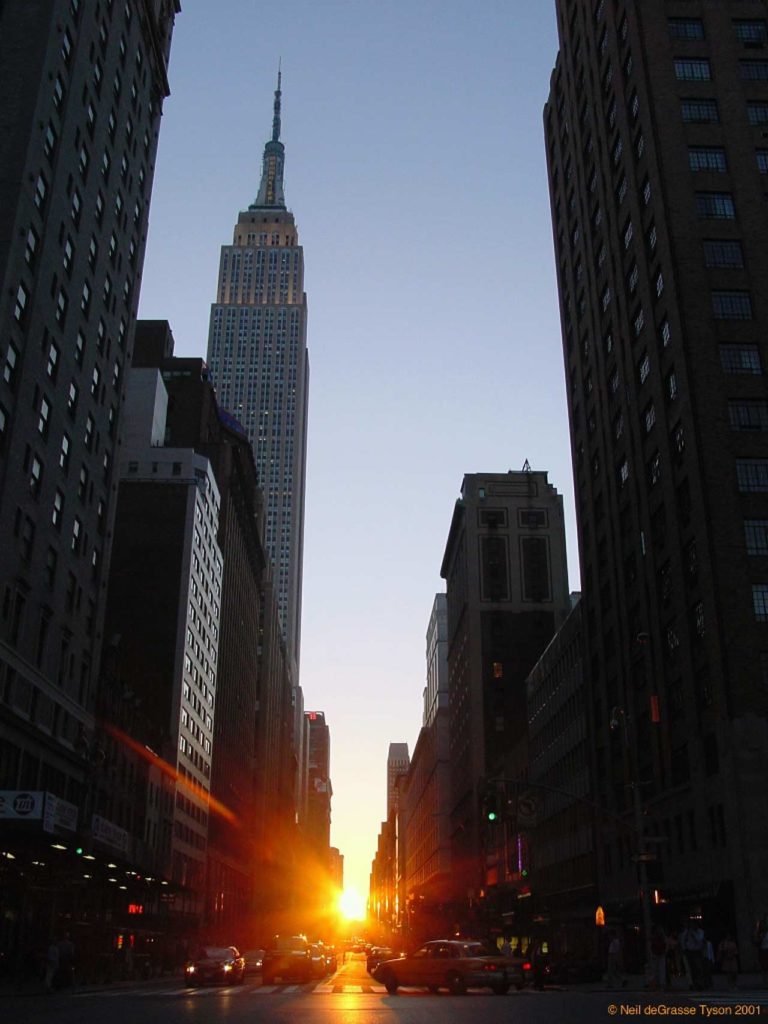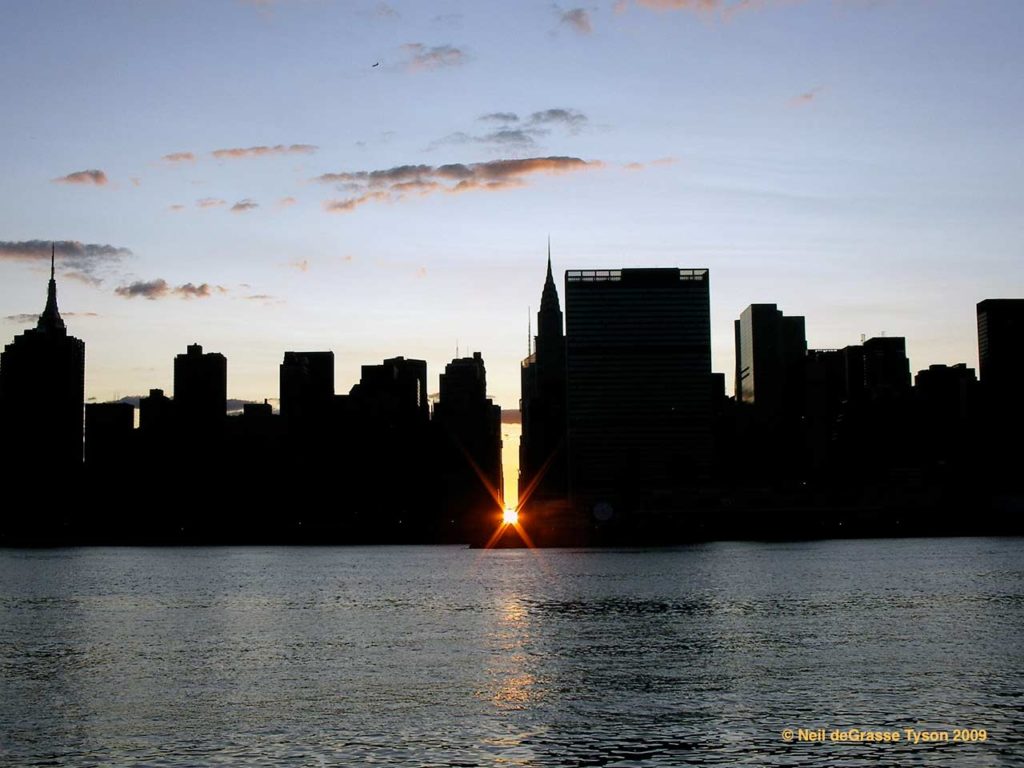Manhattanhenge
Park Avenue and 34th Street
Manhattan
Natural History special issue
Part of City of Stars photo essay.

What will future civilizations think of Manhattan Island when they dig it up and find its carefully laid out network of streets and avenues? Surely they will presume the grid had astronomical significance, just as we have done in the case of that prehistoric circle of large vertical rocks known as Stonehenge, in England’s Salisbury Plain. For Stonehenge, the special day is the summer solstice, the first day of summer, when the Sun rises in perfect alignment with several of the stones.
Manhattan has two such special days: May 28 and July 12. On these days the Sun fully illuminates every single cross street during the last fifteen minutes of daylight and sets exactly on the street’s centerline. Upon studying American culture and what is important to it, future anthropologists might take the Manhattan alignments to be cosmic signs of Memorial Day and, of course, the baseball’s All-Star break.
If the Manhattan grid matched the geographic north-south line, then our special days would be the equinoxes, the two days on the calendar when the Sun rises due east and sets due west. But Manhattan is rotated 30° east from the geographic north, shifting the special days elsewhere in the calendar.


